10 Exterior Color Palettes
Color always sets the rhythm for interiors and it is often the first choice to be made before moving on to other details, such as picking furniture. A right color can open any room, regardless of the area, with direct effects on our spirits. Equally important is also the chromatic choices you make for your facades, a true visual identity that is the first contact a visitor makes with your home. Here are a few exterior color palettes that come in pictures so the examples are more telling.
Symmetrical homes evoke a sense of formality, elegance and heritage. Honor tradition with a lighter-colored palette rimmed by darker accents. This home softens into its surroundings, while a bright blue door spotlights the elegant architecture of the entryway.
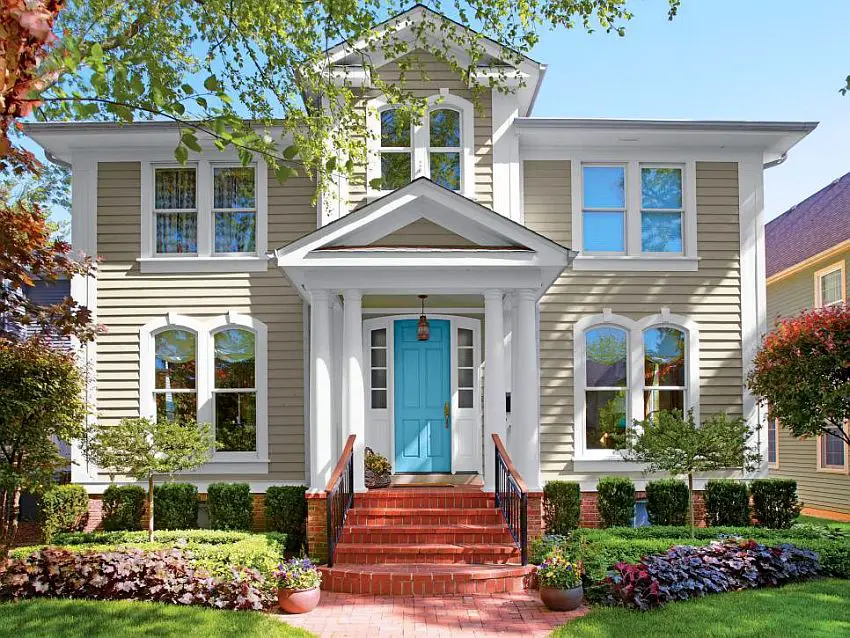
The colonial style houses are in most of the cases painted in white. There are ways to update and modernize that choice, too. The accent shades chosen here—a dusty, lavender gray and a bright turquoise—would normally not be used in the same color scheme.
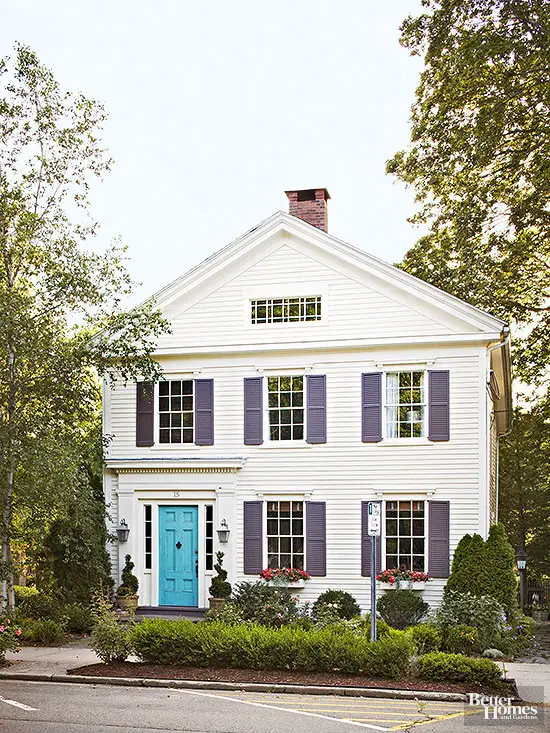
High-contrast landscapes call for high-contrast color palettes. This desert ranch stays cool with a white exterior and an accent of chocolate brown trim. The beauty of this color combo? Any accent color can be chosen for outdoor furniture and decorations.
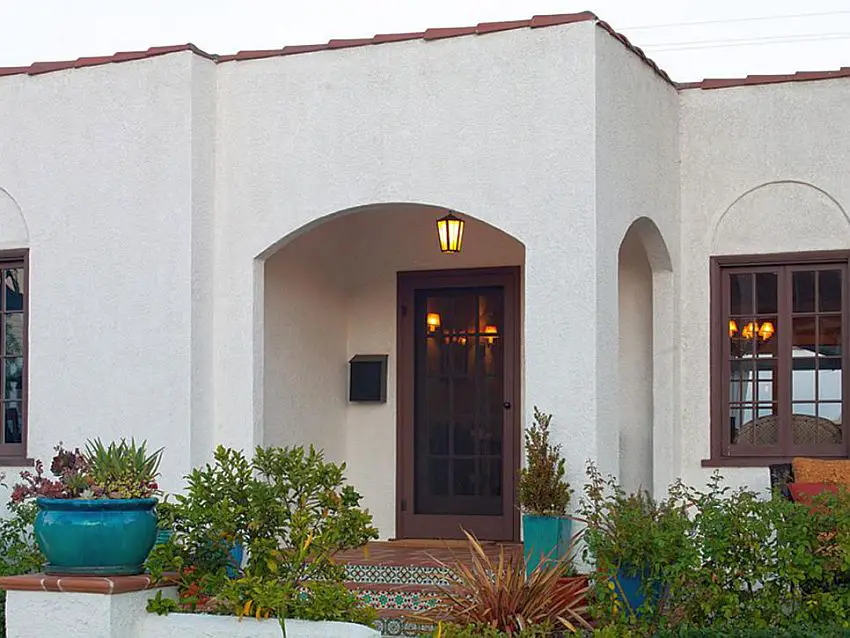
Make a nod to your home’s environment with a color palette that matches its surroundings but still packs curb appeal. This traditional home’s soft pine green base pops with an accent of sky blue and an understated creamy white door.
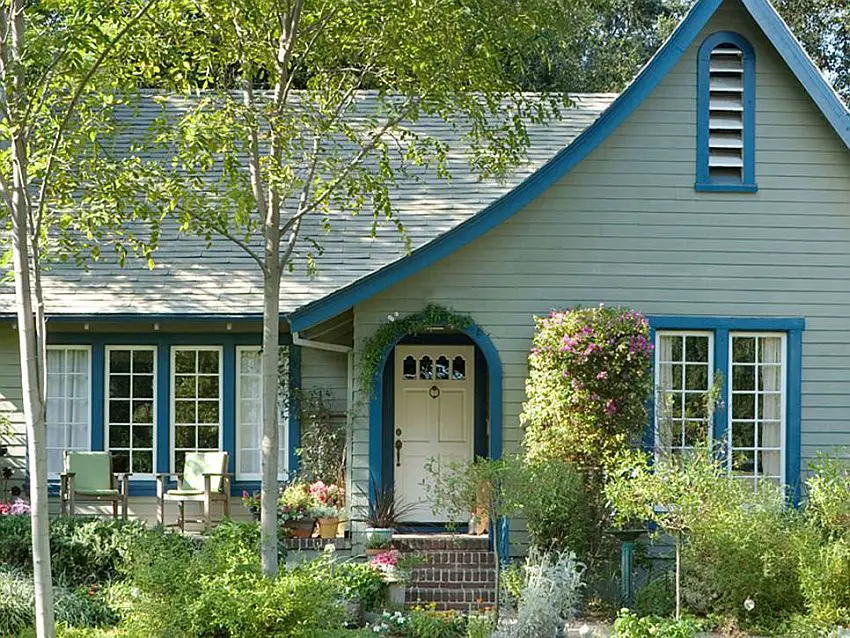
Red, yellow, and blue, the primary colors, are the basis of all other hues; as such, they’re naturally complementary. When given rich depth or startling brightness, the hues provide an exterior color scheme that’s at once distinctive and deeply satisfying.
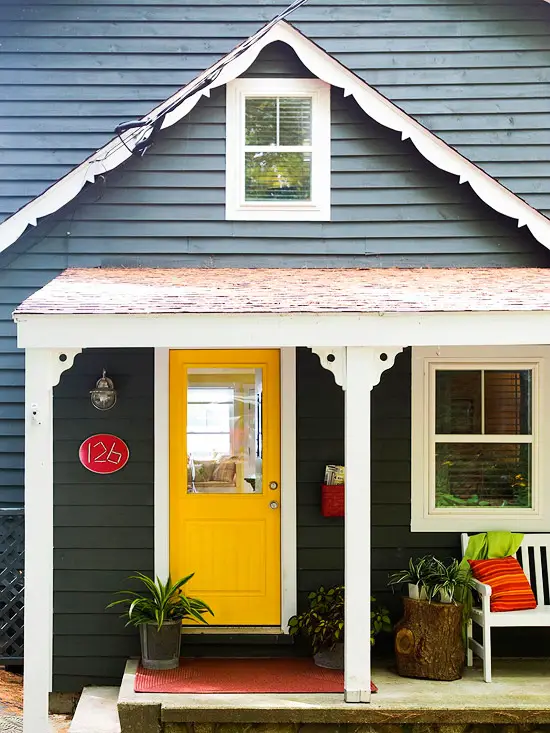
By itself, steely gray can be a sterile choice for an exterior color scheme. But if this cool-minded color tops your preferred list for your home’s facade, consider warming it up. A contrasting material, such as wood, can also be a good choice, particularly when stained a medium to dark color. In this contemporary scheme, a rich gray provides a good bridge between the two hues.
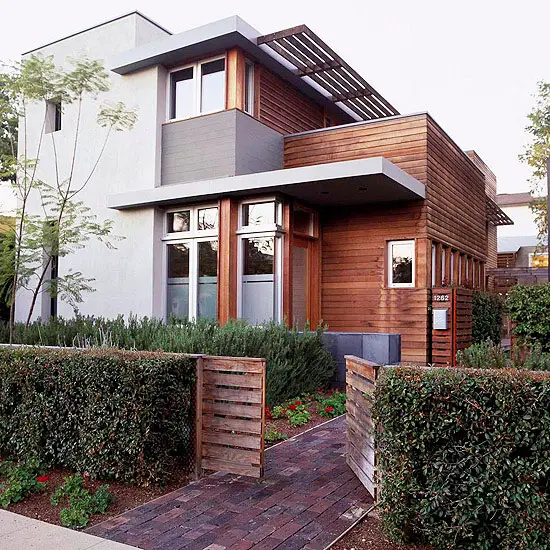
The danger of choosing a single hue for an exterior color scheme is that, without careful planning, it can feel boring and dated. In order to avoid that, identify an accent piece on your home—window frames, shutters, or trim, for example—and paint them either a darker or a lighter shade than your main color. In addition, choose one complementary color—here, red—for an unexpected highlight on a door.
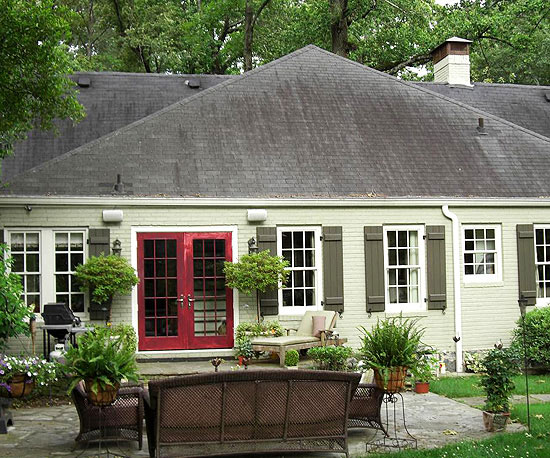
This home gives a subtle nod to Tudor style with its brown accents but is thoroughly contemporary with a bright coat of mustard yellow. For such a statement, opt for a neutrally stained wood door.
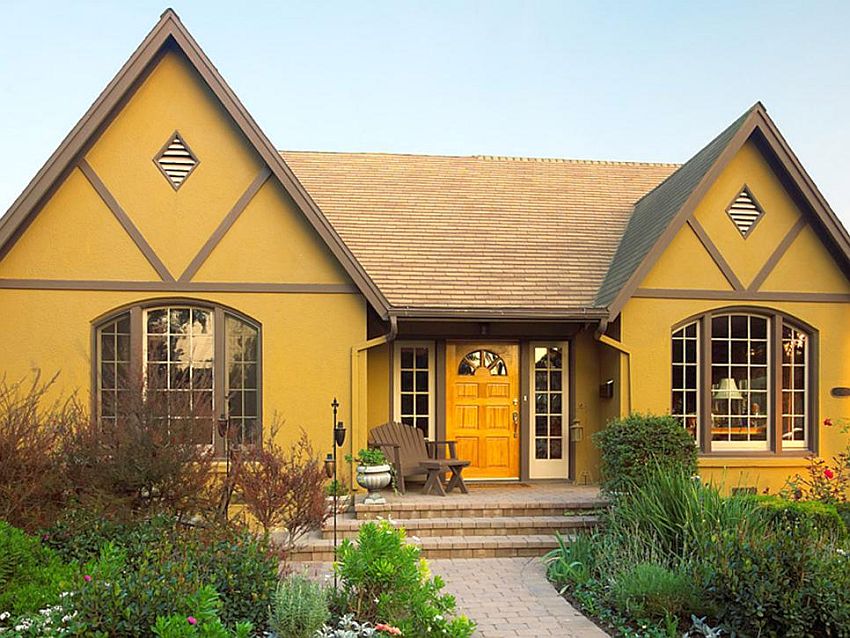
As with traditional painted colors, stain offers a wide range of brights and lights to choose from. As with paint colors, it’s best to stain a swath of exterior wall in different versions and see how the color looks and feels throughout the day. For more classically styled homes, white is a traditional accent for window trim, pillars, and doors.
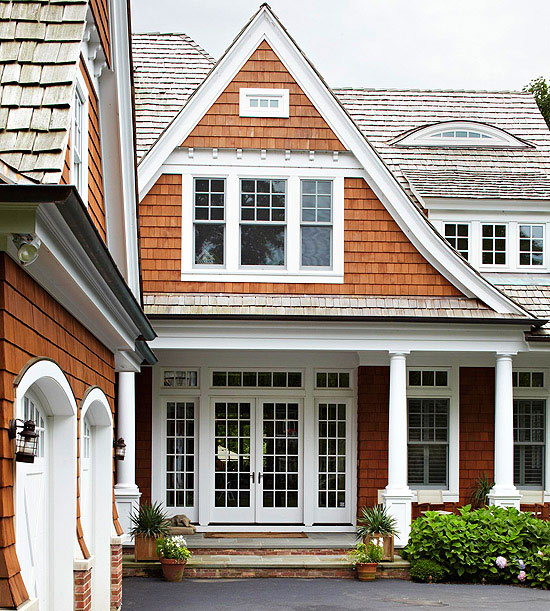
This eye-catching traditional exterior is rooted into its landscape with an earthy palette of taupe, beige, brown and red. Choose muted hues for a warm, sun-baked look.
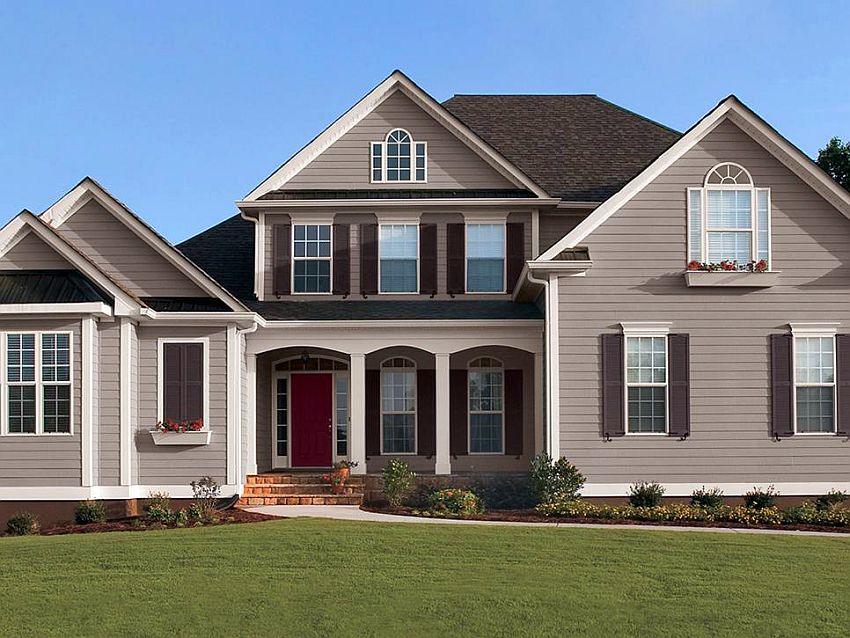
Sources: Hgtv.com, Bhg.com















